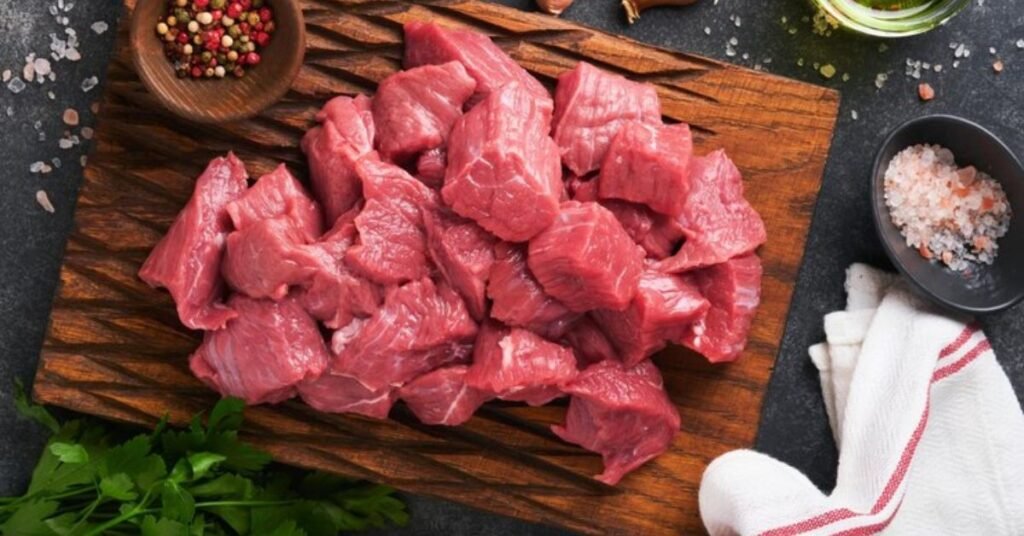Introduction
Kanikama, commonly known as imitation crab, has become a staple in many households and restaurants around the world. This versatile seafood alternative, primarily made from surimi, offers an accessible way to enjoy crab flavor without the high cost or potential allergens. As culinary trends evolve, kanikama continues to gain popularity due to its affordability, adaptability, and nutritional value. In this article, we will delve into the intricacies of seafood, exploring its definition, significance, benefits, applications, challenges, and solutions.
Understanding Kanikama: What Is It?
Definition of Kanikama
Kanikama is a processed seafood product created from surimi, a paste made from finely minced fish, usually Alaskan pollock. The fish is deboned, washed, and then mechanically processed into a smooth paste. This paste is then mixed with other ingredients like starch, egg whites, and seasonings to mimic the texture and flavor of real crab meat. The resulting product is then shaped, cooked, and often colored to resemble crab leg meat, making it a popular choice for salads, sushi, and seafood dishes.
Key Ingredients in Kanikama
The primary ingredient in kanikama is surimi, which is typically made from fish like Alaskan pollock. Other ingredients commonly found in seafood include:
- Starch: Often derived from tapioca or potato, starch helps bind the surimi and gives seafood its firm texture.
- Egg Whites: These contribute to the product’s protein content and help achieve the desired consistency.
- Flavorings and Colorings: Artificial crab flavoring and food coloring are added to replicate the taste and appearance of real crab.
Nutritional Profile of Kanikama
Kanikama offers a unique nutritional profile that makes it an appealing seafood alternative. Generally, it is low in calories and fat while being a good source of protein. A typical serving of seafood (approximately 3 ounces) contains around 70-100 calories, 1-2 grams of fat, and 15-20 grams of protein. Additionally, kanikama is often enriched with vitamins and minerals, making it a nutritious choice for various dietary needs.
The Importance and Benefits of Kanikama
Economic Accessibility
One of the primary advantages of kanikama is its affordability compared to real crab meat, with the rising costs of seafood, kanikama provides a budget-friendly option for consumers looking to enjoy seafood flavors without breaking the bank. This accessibility makes seafood a popular choice for families and restaurants aiming to provide cost-effective menu options.
Versatility in Culinary Applications
Kanikama’s mild flavor and adaptable texture make it suitable for a wide range of dishes. It can be used in sushi rolls, salads, soups, and pasta dishes. Its ability to absorb flavors makes it an ideal ingredient for various cuisines, from Asian to Western. Additionally, seafood is gluten-free, catering to those with dietary restrictions.
Nutritional Benefits
Kanikama is an excellent source of lean protein, making it a healthy addition to meals. Its low fat and calorie content can support weight management goals. Moreover, the inclusion of omega-3 fatty acids from fish-based surimi contributes to heart health, making seafood a nutritious choice for individuals seeking to maintain a balanced diet.
Allergen-Friendly Option
For those with shellfish allergies, kanikama serves as a safe alternative to traditional crab meat. It allows individuals to enjoy the flavor and texture of seafood without the risk of allergic reactions. This allergen-friendly aspect broadens the appeal of seafood to a wider audience.
Applications and Use Cases of Kanikama
In Sushi and Sashimi
Kanikama is a staple ingredient in many sushi dishes, particularly California rolls, where it mimics the texture of crab. Its vibrant color and mild flavor make it a visually appealing addition to sushi platters.
In Salads and Appetizers
Kanikama is commonly featured in seafood salads, offering a refreshing alternative to more traditional ingredients. It can be mixed with vegetables, mayonnaise, and seasonings to create delicious crab salads that are perfect for appetizers or light meals. The versatility of seafood allows it to be incorporated into various salad recipes, appealing to different taste preferences.
In Asian Cuisine
In Asian cooking, kanikama is used in stir-fries, dumplings, and soups. Its ability to absorb flavors makes it an ideal component in dishes where it can soak up sauces and spices. Where it becomes infused with the broth’s rich flavors.
In Pasta Dishes
Kanikama can also be used in pasta dishes. Providing a seafood twist to classic recipes. Enhancing the dish’s overall flavor and texture. The adaptability of kanikama allows home cooks to experiment with various recipes and cuisines.
Challenges and Misconceptions about Kanikama
Misconception: Kanikama Is Not Real Seafood
A common misconception is that kanikama is not a “real” seafood product. It is still a seafood product that contains fish protein. Consumers should understand that seafood offers a unique alternative that provides many of the same benefits as traditional seafood.
Challenge: Nutritional Value Perception
Some people may perceive kanikama as less nutritious due to its processed nature. However, when compared to other processed food options, seafood offers a healthy balance of protein, low calories, and minimal fat. It’s essential for consumers to recognize the nutritional benefits and to incorporate kanikama as part of a balanced diet.
Solution: Educating Consumers
To address these misconceptions, education plays a vital role. Producers and retailers can provide clear information about the ingredients, nutritional value, and culinary uses of kanikama. Promoting transparency in the production process can help build consumer trust and dispel myths surrounding this seafood alternative.
Challenge: Flavor and Quality Variation
The flavor and quality of seafood can vary significantly between brands. Some products may contain fillers or artificial flavors that detract from the overall taste. To overcome this challenge, consumers should look for reputable brands that prioritize quality ingredients and transparency in their production methods.

Conclusion
Kanikama, the imitation crab product, represents a unique intersection of affordability, versatility, and nutrition in the world of seafood alternatives. With its roots in surimi, seafood has transformed into a beloved ingredient across various cuisines, appealing to consumers seeking delicious and budget-friendly options. Understanding the significance, benefits, applications, and challenges surrounding seafood can help consumers make informed decisions about incorporating this versatile ingredient into their diets.
As culinary trends continue to evolve. Whether enjoyed in sushi, salads, or pasta dishes, kanikama invites you to explore new flavors and culinary possibilities. Embrace the versatility of kanikama, and discover how it can enhance your culinary experiences while providing a healthy and delicious alternative to traditional seafood.



